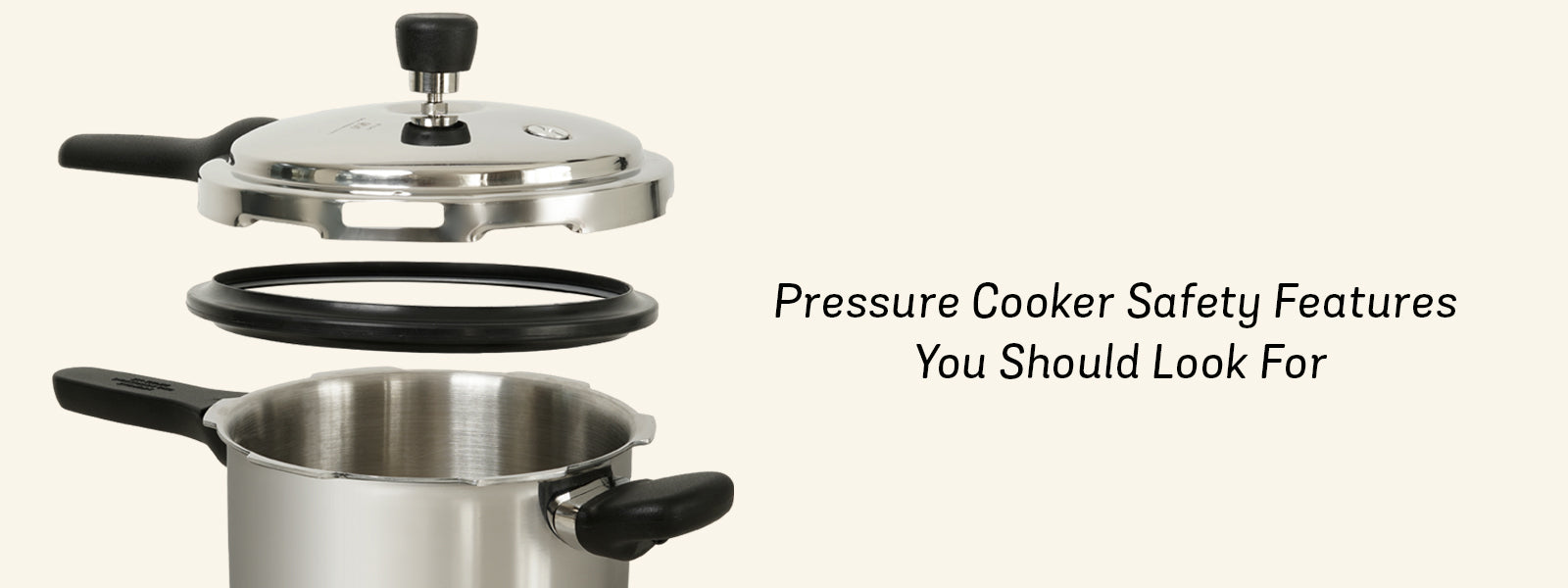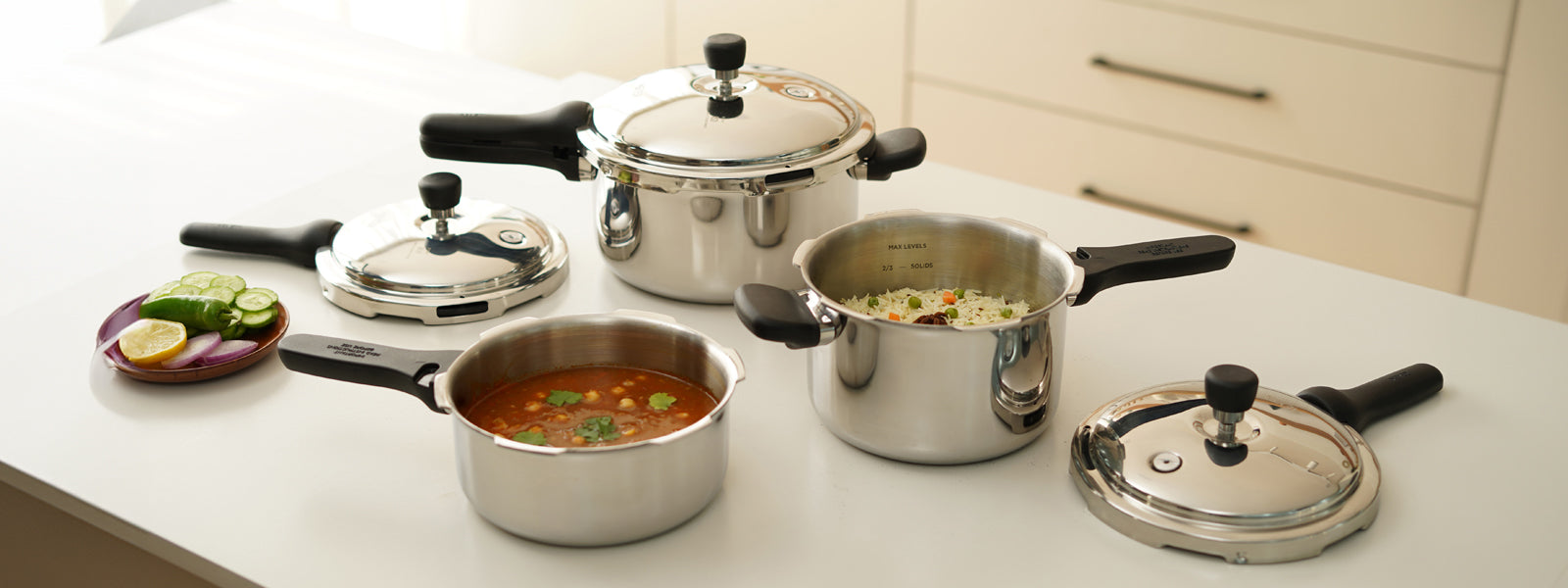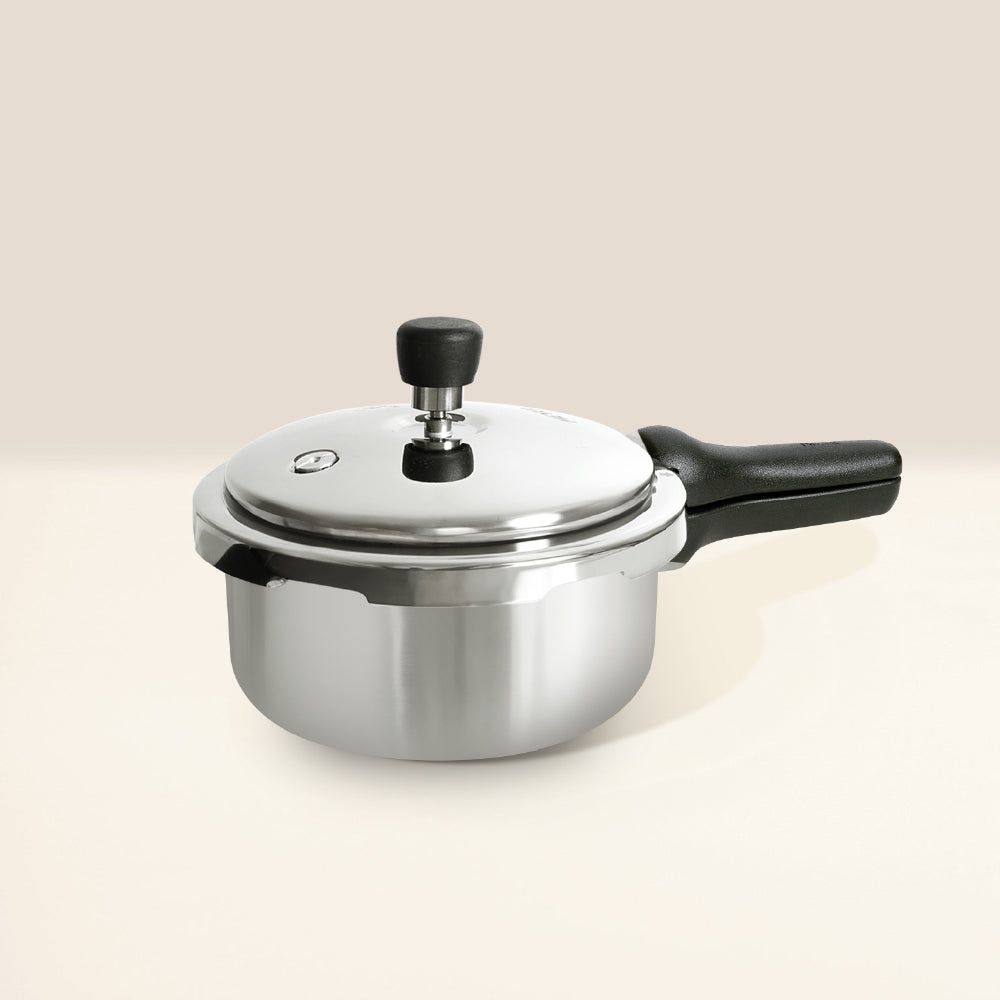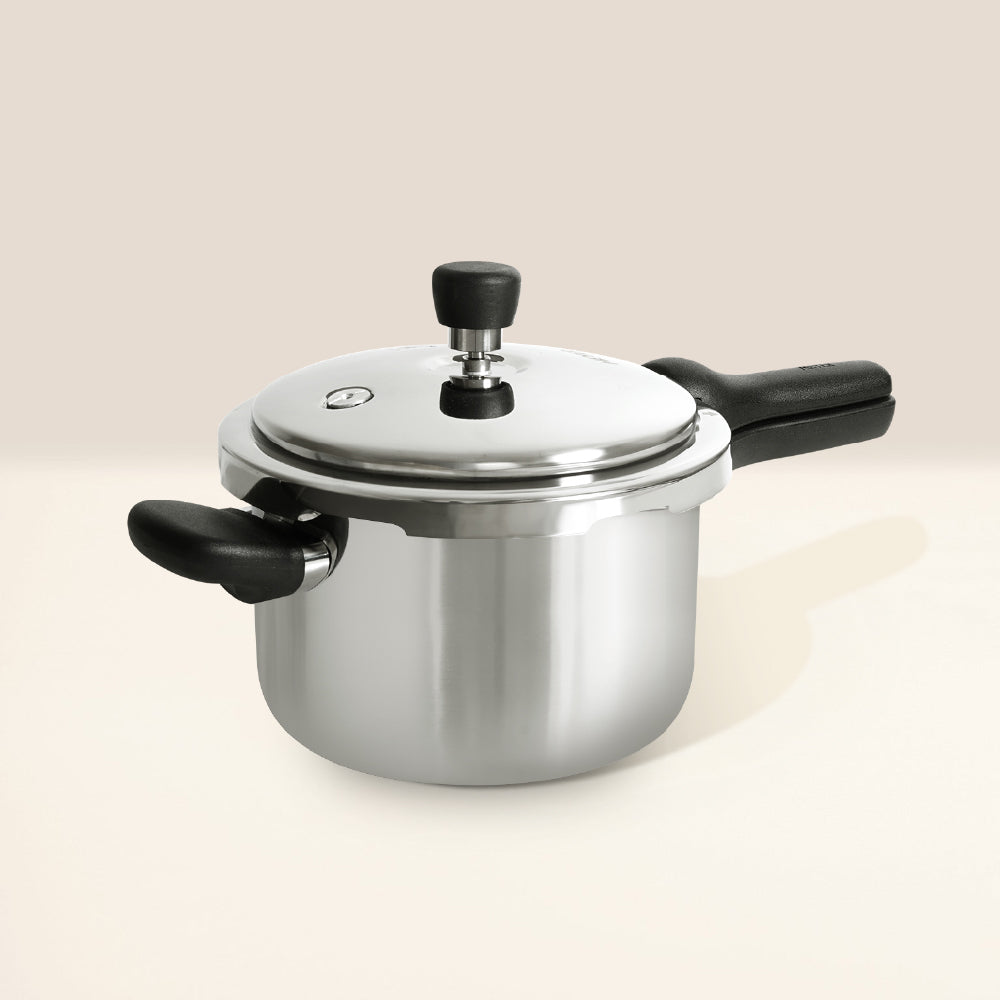If you're a fan of Indian cooking, you're likely familiar with the rich flavors and aromas that come from slow-cooked dishes. But did you know that pressure cooking can speed up the process without marring the flavor or nutrition?
Table of Contents
MEYER Presta Tri-ply with Outer Lid Pressure Cooker 3L
I. Introduction
Welcome to our blog on the science behind pressure cooking and how it affects Indian food In this blog post, we'll explore the science behind pressure cooking and its impact on Indian food. We'll cover everything from the physics of pressure to the chemical reactions that take place in your ingredients. Whether you're a seasoned chef or new to the world of Indian cooking, this post will give you a deep understanding of the benefits and risks of cooking under pressure. So, let's dive in and discover how you can revolutionize your cooking experience with pressure cooking!
II. What is Pressure Cooking?
Pressure cooking is a cooking method that involves cooking food in a sealed pot under high pressure. By increasing the pressure inside the pot, the boiling point of water is raised, which allows food to cook faster and more evenly than with traditional cooking methods. This is because the high pressure forces moisture and heat into the food, which can speed up the cooking process by up to 70%.
Some advantages of pressure cooking over traditional cooking methods include:
Reduced cooking time: Because pressure cooking can cook food faster, it can be a time-saving cooking method, especially for dishes that would typically take several hours to prepare.
Improved nutrient retention: Because the cooking time is reduced, less heat exposure means that fewer nutrients are lost during the cooking process, resulting in healthier and more nutritious meals.
Enhanced flavor: Because the high pressure and moisture can penetrate the food more deeply, it can help to infuse the food with more flavor, resulting in more flavorful and tender dishes.
In the next section, we'll discuss how pressure cooking can affect Indian food and its flavors.
III. How Does Pressure Cooking Affect Indian Food?
Pressure cooking can have a significant impact on the texture, flavor, and nutrient retention of Indian food. Here's how:
Texture: Pressure cooking can tenderize tough cuts of meat and break down fibrous vegetables, resulting in softer and more tender dishes. This is particularly useful in Indian cuisine, where slow-cooking is often used to achieve a similar effect.
Flavor: The high pressure and moisture in a pressure cooker can help to infuse Indian spices and flavors more deeply into the food, resulting in richer and more complex flavors. However, it's important to note that some delicate flavors, such as fresh herbs, may be lost in the pressure cooking process.
Nutrient retention: Because pressure cooking can cook food faster, it can help to retain more nutrients than traditional cooking methods. This can be particularly beneficial for Indian dishes that use nutrient-dense ingredients like lentils and vegetables.
To see the impact of pressure cooking on Indian food, it's useful to compare pressure-cooked and traditionally cooked dishes side-by-side. For example, a pressure-cooked chicken curry may be more tender and flavorful than a slow-cooked version, while a pressure-cooked dal may retain more nutrients than a traditionally cooked version.
In the next section, we'll delve into the science behind pressure cooking and how it works to achieve these effects.
IV. The Science Behind Pressure Cooking
The science behind pressure cooking lies in the physical properties of pressure and how it affects the cooking process. Here's how:
Pressure: In a pressure cooker, the lid is tightly sealed, and the pressure is increased to around 15 pounds per square inch (psi), which raises the boiling point of water from 212°F (100°C) to around 250°F (121°C). This higher temperature and pressure can cook food much faster than traditional cooking methods, resulting in quicker cooking times.
Breaking down tough cuts of meat: When cooking meat, the high pressure can help to break down the collagen and connective tissue, making the meat more tender. This is because the high pressure forces water and heat into the meat, breaking down the tough fibers.
Tenderizing vegetables: In addition to breaking down tough cuts of meat, the high pressure in a pressure cooker can also help to tenderize vegetables. This is because the high pressure can penetrate the vegetables more deeply, breaking down the tough cell walls and making the vegetables softer and easier to eat.
Overall, pressure cooking is a powerful cooking technique that can help to speed up the cooking process while retaining nutrients, flavors, and textures. In the next section, we'll discuss some tips and tricks for pressure cooking Indian food.
V. Benefits and Risks of Pressure Cooking
Pressure cooking offers many benefits, such as:
Reduced cooking time: Pressure cooking can cook food much faster than traditional cooking methods, making it a great option for busy weeknights or when you're short on time.
Improved nutrient retention: Because pressure cooking uses less water and shorter cooking times than traditional cooking methods, it can help to retain more nutrients in your food, resulting in healthier meals.
More flavorful dishes: The high pressure and moisture in a pressure cooker can help to infuse flavors more deeply into your food, resulting in richer and more complex dishes.
However, there are some risks associated with pressure cooking that you should be aware of. Here are some safety precautions to keep in mind:
Follow the manufacturer's instructions: Make sure you read and follow the instructions that came with your pressure cooker to ensure safe and proper use.
Never overfill the pressure cooker: Overfilling your pressure cooker can cause the pressure to build up too high, which can be dangerous. Make sure to leave at least one-third of the pot empty to allow room for the food to expand and create steam.
Release pressure carefully: When you're done cooking, make sure to release the pressure from the cooker slowly and carefully, following the manufacturer's instructions. Rapid pressure release can be dangerous and cause the contents of the pot to spew out and cause burns.
Regular maintenance: Regularly check and maintain your pressure cooker to ensure it's working properly and safely.
Overall, with proper use and safety precautions, pressure cooking can be a safe and efficient way to cook your favorite Indian dishes.
VI. Tips for Pressure Cooking Indian Food
Pressure cooking is a great way to prepare Indian dishes quickly and easily. Here are some tips to help you get the best results:
Use the right amount of water: Different types of Indian dishes require different amounts of water. As a general rule, soupy dishes like dal and curries require more water, while dry dishes like biryani require less water. Make sure to follow the recipe or use a trusted source to determine the correct amount of water for your dish.
Adjust cooking times: Cooking times can vary depending on the size and type of ingredients used. For example, smaller pieces of meat will cook faster than larger ones. It's important to adjust the cooking time accordingly to ensure your food is cooked properly.
Layer ingredients properly: When cooking Indian dishes in a pressure cooker, it's important to layer the ingredients properly to ensure even cooking. Start with the meat or vegetables at the bottom, followed by spices and any liquid ingredients.
Don't overcook: Overcooking can lead to dry and tough meat, mushy vegetables, and loss of nutrients. Be sure to follow the recommended cooking times and check your food periodically to avoid overcooking.
Release pressure properly: When you're done cooking, make sure to release the pressure from the cooker slowly and carefully. Rapid pressure release can cause the contents of the pot to spew out and cause burns.
Common mistakes to avoid when using a pressure cooker include:
- Overfilling the pot
- Using too much or too little water
- Not adjusting cooking times for different ingredients
- Not properly layering ingredients
- Overcooking
- By following these tips and avoiding common mistakes, you can prepare delicious and healthy Indian dishes in no time with your pressure cooker.
In conclusion, pressure cooking is a great way to cook Indian food quickly and efficiently. By cooking under high pressure, the cooking time is reduced, and the nutrients and flavors are retained, resulting in healthier and tastier meals. While pressure cooking can seem intimidating at first, it's a safe and easy method of cooking that can be mastered with practice. By following the tips and safety precautions outlined in this post, you can enjoy delicious and healthy Indian dishes with your pressure cooker. So go ahead and try out your favorite Indian recipes with your pressure cooker, and see the amazing results for yourself!












Leave a comment